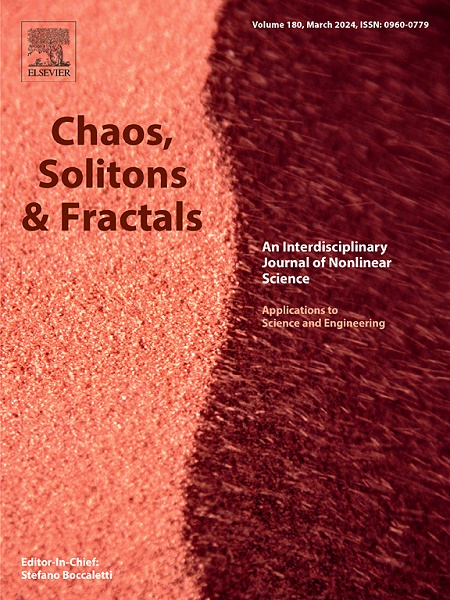Effect of higher-order nonlinearities and dispersions on modulation instability in semiconductor quantum dots
IF 5.6
1区 数学
Q1 MATHEMATICS, INTERDISCIPLINARY APPLICATIONS
引用次数: 0
Abstract
This article presents the theoretical investigation of modulation instability (MI) in a one-dimensional waveguide structure embedded in a lower-index material, featuring a high-density array of InAs cone-shaped quantum dots within bulk GaAs. The system operates under electromagnetically induced transparency (EIT) conditions, wherein a weak probe field and a strong control field interact within a three-level ladder-type semiconductor quantum dot (SQD) system. Giant Kerr, quintic, and septic nonlinearities of the order , and respectively, are identified in the SQD system that exhibit strong tunability under the effect of control field parameters. These giant nonlinearities are employed to control the MI of the probe pulse. The MI gain enhances linearly with input power, when only Kerr nonlinearity is present, while quintic and septic nonlinearities contributes to the stabilization of MI towards the higher power levels. The higher-order dispersions further contribute to the reduction in the MI spectral bandwidth, enabling enhancement of the stability of the probe field against MI. These findings highlight the potential of SQD-based optical devices for controlled nonlinear optical applications and signal modulation.
高阶非线性和色散对半导体量子点调制不稳定性的影响
本文介绍了嵌入在低折射率材料中的一维波导结构中的调制不稳定性(MI)的理论研究,该结构在块体GaAs中具有高密度的InAs锥形量子点阵列。该系统在电磁感应透明(EIT)条件下工作,其中弱探测场和强控制场在三能级阶梯型半导体量子点(SQD)系统中相互作用。在控制场参数的作用下,系统表现出较强的可调性,分别为~10−11m2/V2、~10−22m4/V4和~10−32m6/V6阶的巨大Kerr、五次和次幂非线性。这些巨大的非线性被用来控制探测脉冲的MI。当仅存在Kerr非线性时,MI增益随输入功率线性增加,而五次和五次非线性有助于MI向更高功率水平稳定。高阶色散进一步减少了MI频谱带宽,增强了探头场对MI的稳定性。这些发现突出了基于sqd的光学器件在受控非线性光学应用和信号调制方面的潜力。
本文章由计算机程序翻译,如有差异,请以英文原文为准。
求助全文
约1分钟内获得全文
求助全文
来源期刊

Chaos Solitons & Fractals
物理-数学跨学科应用
CiteScore
13.20
自引率
10.30%
发文量
1087
审稿时长
9 months
期刊介绍:
Chaos, Solitons & Fractals strives to establish itself as a premier journal in the interdisciplinary realm of Nonlinear Science, Non-equilibrium, and Complex Phenomena. It welcomes submissions covering a broad spectrum of topics within this field, including dynamics, non-equilibrium processes in physics, chemistry, and geophysics, complex matter and networks, mathematical models, computational biology, applications to quantum and mesoscopic phenomena, fluctuations and random processes, self-organization, and social phenomena.
 求助内容:
求助内容: 应助结果提醒方式:
应助结果提醒方式:


